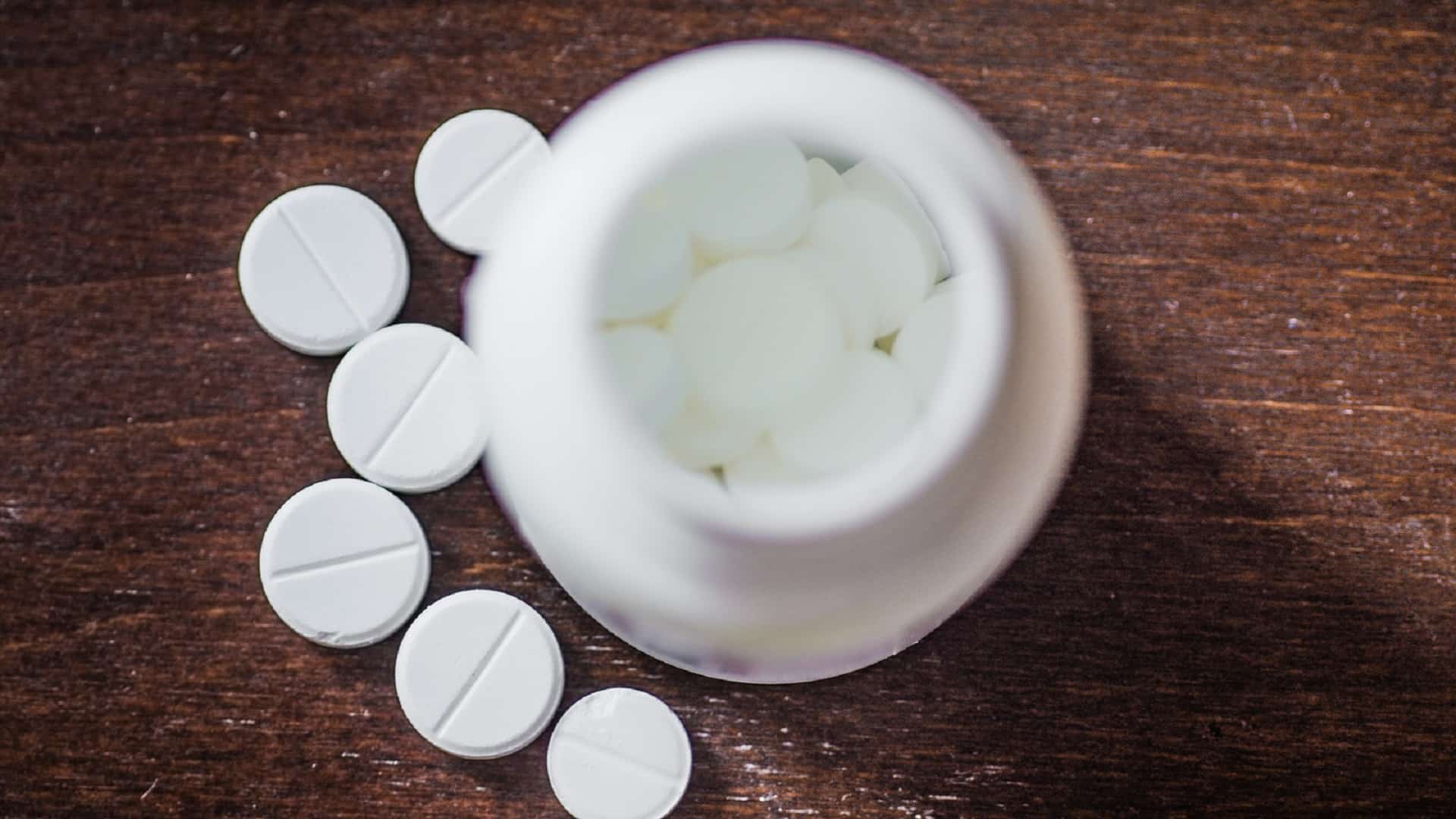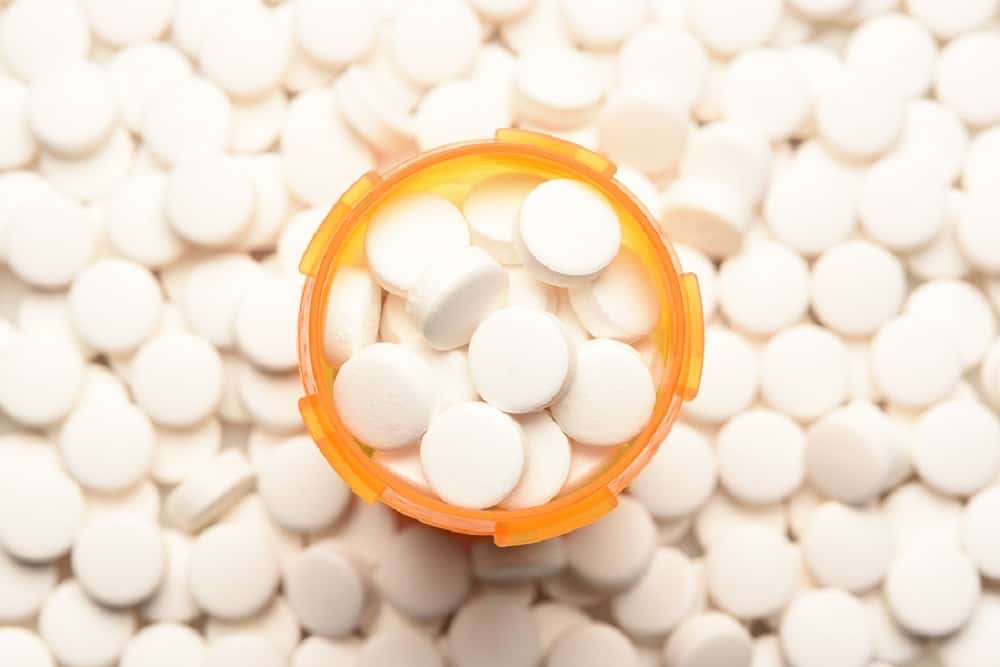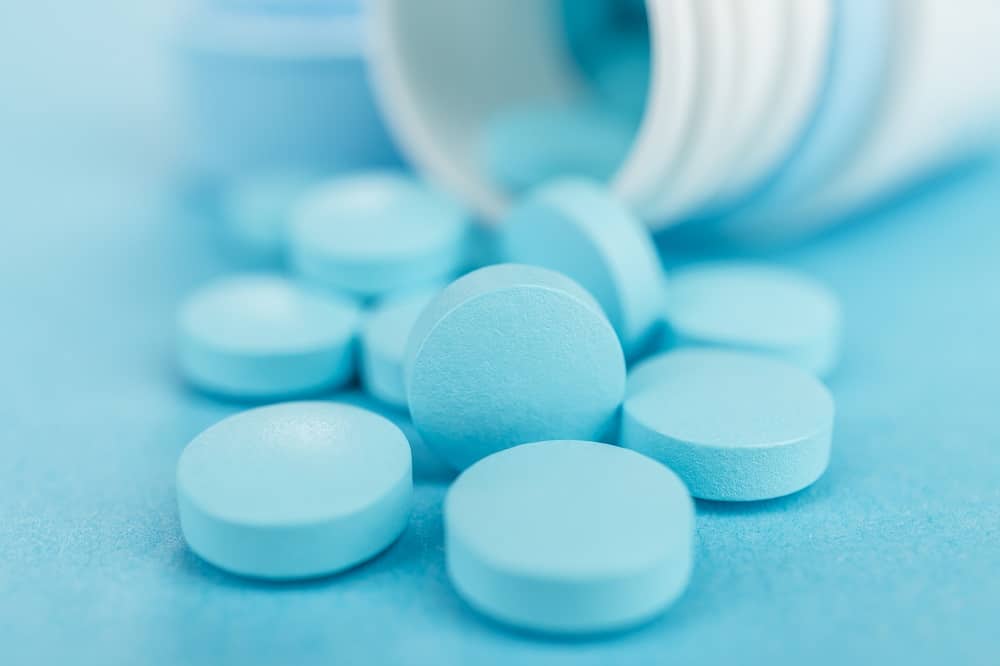“You could think about the manufacturers as having lit the fire, and the distributors and pill mills were really pouring gas on the fire.”~ Dr. Andrew Kolodny, Co-Director of Opioid Policy Research, Heller School for Social Policy and Management, Brandeis UniversityThe opioid epidemic continues in America. Every year, tens of thousands of people die due to an overdose of such dangerous drugs as prescription painkillers, illicit heroin, ad increasingly, ultra-powerful synthetic opioids like fentanyl. Millions more struggle with problematic opioid abuse, dependence, and full-blown addiction.Called the worst public health crisis in this nation’s history, the opioid crisis has devastated communities, drained public resources, and brought unspeakable tragedy into the lives of stricken families all around the country — from Massachusetts to West Virginia to Florida to Colorado to Washington and back. There is no part of America that has not been affected by opioids.But how did it get so bad, and how has it stayed so bad for so long?There’s a lot of blame to go around…greedy Big Pharma drug manufacturers, distributors and pharmacies that turned a blind eye, and even individual doctors and dentists. And while it is true that the vast majority of healthcare providers acted in good faith while being intentionally misled by the unscrupulous sales practices of representatives working for the drug companies, it is also true that there were also individual providers who were tempted into over-prescribing by the promise of easy money, lucrative bonuses, free trips, and other glamorous perks.Here we will take a closer look at problem prescribers, pill mills, and the role they played in creating and expanding the two-decades-and-counting U.S. drug crisis that continues to claim thousands of lives even today.
“Get the help you need today. We offer outpatient assistance, so you can maintain your work, family, and life commitments while getting the help you deserve!”
The Roots of the Opioid Epidemic
“(Purdue Pharma) sponsored 20,000 educational programs across the country with messages for the medical community that we were allowing patients to suffer needlessly because of an overblown fear of addiction… and as the medical community responded to this brilliant marketing campaign, and as the prescribing began to take off, it led to parallel increases in addiction and overdose deaths that led to a public health crisis. Since 1997, we’ve had a 900% increase in opioid addiction in the United States from exposure to opioid pain medicine.”~ Dr. Andrew KolodnyIt all started back in 1996, when Purdue Pharma was given FDA approval for OxyContin, a controlled-release oxycodone formulation.Because of overly-aggressive targeted marketing to prescribers, OxyContin was a game-changing success. During its first full year, OxyContin accounted for $49 million in sales. By 2002, that number was $1.6 billion. As of today, OxyContin has brought in over $31 billion for Purdue.Sales representatives targeted hospitals and surgical centers across the country – emergency physicians, surgeons, pain management specialists, and even anesthesiologists were all on the list.Reps would stop by again and again, acting on instructions that read, in part, “… it’s important to keep highlighting OxyContin benefits to your doctors.” In later court proceedings, it was alleged that Pudue told its sales force to tell doctors that “OxyContin had less euphoric effect and less abuse potential than short-acting opioids“.
Misleading Prescribers and the Public
“Most of the questionable practices that propelled the pharmaceutical industry into the scourge it is today can be attributed to Arthur Sackler.”~ Allen J. Frances, Chairman of the Department of Psychiatry, Duke University School of MedicineAs OxyContin sales began to explode, other drug companies began to copy Purdue’s tactics, hoping to emulate their success.But in actuality, these claims were often misleading, without scientific backing, and in many cases, completely contrary to the available evidence.Among the worst claims:
- Minimizing OxyContin’s potential for addiction
- Touting OxyContin as a safe an effective remedy for chronic pain
- Promising steady, continuous pain relief
- Overstating the duration of relief
- Purposefully burying internal communications showing corporate knowledge of the false claims.
- Failing to report suspicious or improper prescribing.
- Attempting to influence opioid prescribing guidelines by donating exorbitant sums of money to the American Pain Society, the American Academy of Pain Management, and the Federation of State Medical Boards.
For example, way back in 1993, Dr. Russell Portenoy, a respected pain specialist, was quoted by the New York Times as saying, “There is growing literature showing that these drugs can be used for a long time, with few side effects.” He went on to call opioids as “a gift from nature”.Furthermore, in 1997, the American Academy of Pain Medicine and the American Pain Society published a joint statement suggesting that opioid drugs should be prescribed as a first-line treatment for chronic pain.Reassured by these endorsements, and under constant pressure to treat pain as another vital sign, doctors routinely prescribed opioids for almost any level of discomfort, often completely unaware of the risks.But here’s the problem — Dr. Portenoy received his funding by Purdue Pharma, and Dr. J. David Haddox, the author of the joint statement for the AAPM and the APS, was a paid speaker for Purdue.
“We treat both addiction and co-occurring disorders and accept many health insurance plans. Take a look at our outpatient program today!”
The Truth About Prescription Drug Abuse
“Many clinicians have told me they weren’t aware of just how bad the problem had gotten. Many were not aware of the connection between the epidemic and prescribing habits.”~ United States Surgeon General Dr. Vivek MurthyThe stereotype of a prescription drug abuser paints a picture of someone person who cheats the system and obtains their pills through fraud or who buys from drug dealers.But recent investigations have found that the problem of prescription drug abuse is far more complicated than that. Disproving the stereotype, the Centers for Disease Control and Prevention reports that only 15% of the prescription drug misused by “chronic abusers” were obtained illegally.For example, in 2012, the Los Angeles Times discovered that in four different counties in Southern California, over half of all accidental prescription drug deaths involved a legitimate doctor’s prescription. Five years’ worth of coroner’s records from in Los Angeles, Orange, Ventura, and San Diego Counties revealed that 47% of fatal prescription overdoses involved doctor-prescribed medications that were found to be the sole or contributing cause of death.Of special relevance, a tiny fraction of all the providers in the combined four counties – just 0.1% – wrote 17% of the deadly prescriptions. Alarmingly, each one of those doctors had at three or more patients who fatally overdosed.Why did this happen, not just in California, but all across the country?Part of the reason was misinformation. For almost 20 years, prescribers were misled by Big Pharma companies. This pattern of corporate malfeasance is the basis for the thousands of lawsuits.
Problem Prescribers Push Pain Pills
“In the midst of a nationwide opioid epidemic that has reached crisis proportions, Mr. Kapoor and his company stand accused of bribing doctors to overprescribe a potent opioid and committing fraud on insurance companies solely for profit.”~ Acting United States Attorney William WeinrebBut drug companies did more than lie to the medical community and the public. To drive sales, they instituted a system to reward doctors who pushed opioids and met certain prescribing quotas.While direct payments for prescribing are illegal, Big Pharma found a workaround to circumvent the law. Doctors could become “paid consultants” rewarded with cushy speaking engagements, lucrative fees, and special perks such as all-expenses-paid trips. Expertise was not a requirement, but meeting monthly quotas was. Alec Burlakoff, an executive for Insys Therapeutics, allegedly wrote to a sales representative, saying, “[T]hey do not need to be good speakers, they need to write a lot of…[prescriptions for the fentanyl spray].“Compensation could easily reach tens of thousands of dollars a year. And if a provider missed their quota enough times, the perks could be taken away… no trips, no speaking gigs, and no collecting easy paychecks.Obviously, this is a system that lends itself to abuse. To keep from losing these benefits, a significant portion of physicians continued to over-prescribe opioid painkillers, even after the truth about the risks started to come out.Still others realized how much money there is to be made from selling pain pills to opioid-dependent or addicted patients. It was a common practice among pill-pushing doctors to charge hundreds of dollars in cash to opioid-seeking patients, even if they had insurance. Most times, they didn’t even bother examining the patient or reviewing their health or medication history.
Making Examples Out of Problem Prescribers
“I want this case to send a message to physicians and the health care community. Unlawfully distributing opioids and other controlled substances is a federal crime that could end a medical career and send an offender to prison.”~ U.S.Attorney Stephen McAllisterOnce upon a time, the prosecution of overprescribing health care providers was almost unheard-of. The general consensus was that any blame or criminal prosecution should be focused on the opiate addict. After all, the thought was, they chose to take more of their opioid pain medication than directed.But as science teaches us more about the disease — NOT the choice — of addiction, we can understand how contrary to the Hippocratic Oath pill-pushing really is.
- October 2015: A Los Angeles osteopathic surgeon was convicted on three counts of second-degree murder after 9 of her patients fatally overdosed. She was the first doctor in California to be charged with murder because of patient ovedoses. She was sentenced to 30 years to life in prison.
- June 2017: An Oklahoma doctor was charged with five counts of second-degree murder for prescribing a “horrifyingly excessive” cocktail of prescription drugs. One of her patients who fatally overdosed was given 510 painkillers, tranquilizers, and muscle relaxants in one day.
- February 2019: A New-York-based pain management doctor was convicted on 9 felony counts after prescribing oxycodone and fentanyl without legitimate medical need. When his home was raided, authorities found hundreds of fentanyl patches and sprays, and boxes of cash totalling $729,000. From 2015 through 2017, this doctor prescribed nearly one million oxycodone pills.
- March 2019: A Wichita, Kansas, doctor was given a life sentence after being convicted of selling opioid drugs to patients for cash without a legitimate medical need.
- April 2019: A Hamilton, Ohio, doctor was convicted of 37 charges related to the illegal prescription of opioid pain pills.
- June 2019: A Jackson Township, Ohio, family practitioner was convicted of 187 charges, including drug trafficking, involuntary manslaughter, and Medicaid fraud.
- August 2019: Santa Rosa, California, primary-care physician was arrested and charged with four counts of second-degree murder after five of his patients died. One of those patients was prescribed up to 360 pain pills a month.
Rise of the Pill Mills
“If doctors are out there acting as drug dealers, pill pushers, that’s a federal crime. We’re going to investigate those doctors. They’re going to be tried, and…they’re going to be finding themselves in prison for a long time.”~ U.S. Attorney Ben GlassmanWhat started out as a relatively minor problem involving individual doctors here and there soon became a cottage industry. Starting slowly in the late 1990s, proliferating in the early 2000s, and peaking by 2010, “pill mills” became the go-to resource for anyone looking for cheap and easy-to-obtain prescription painkillers.Pill mills are walk-in clinics where anyone can just show up, without an appointment, and quickly leave with whatever prescription drugs they were after. It was frightfully easy – the doctors took no histories, ran no tests, and did no actual diagnostic work. Instead, they merely wrote prescriptions and then directed patients to the on-site pharmacy. No insurance was needed, because prescriptions were cash-only. Oxycodone and other narcotic medications could be purchased for as little as $10 a pill.To put that in perspective, that same pain pill might have an illicit street value of up to $100.And where was the epicenter of the pill mill boom?The sunny state of Florida.According to Lisa McElhany, formerly a Broward County Sheriff’s Office narcotics investigator, these unscrupulous clinics “opened fast and furious because there was very little regulation… and the majority of law enforcement was not trained to handle the movement of legal drugs for illegal purposes…Our laws were geared toward your traditional street-level drugs — cocaine, heroin, marijuana, methamphetamine — and not so much on prescription drugs.”The ease of access and the savings created a new phenomenon — prescription tourism. These Florida pill mill clinics paid for billboard advertisements promising easy pain relief along interstate highways. It was not unusual for parking lots to be filled with cars from West Virginia, Kentucky, Ohio, or other states.
How Bad Was the Problem?
“If we closed down one clinic, you could watch the patients, literally a wave, go to another physician by word of mouth. It was a cash-pay business, and it was a big business.”~ Lisa McElhany, currently the President of the National Association of Drug Diversion InvestigatorsAt the pill mill peak, circa 2010, 90 out of the top 100 opioid painkiller prescribers were doctors located in Florida. Other relevant statistics paint a picture that is even more alarming. In 2010:
- 85% of the oxycodone in America was prescribed in Florida.
- Approximately 500 million pain pills were sold in Florida.
- There were 4282 people who died with a prescription opioid in their system.
- That is a four-fold increase over 2000.
- Over 2700 of those deaths were recorded as overdoses.
Today, opioid addiction remains a problem in Florida. In 2017, Florida was second only to Ohio in the number of opioid-related fatal overdoses.
“We accept many health insurance plans. You can get your life back in order with our outpatient program today!”
The Overdose Epidemic in America, By the Numbers
“…there’s a drug epidemic the likes of which we’ve never seen in this country.”~ President Donald TrumpCurrently, overdoses are the #1 cause of death for Americans younger than 50. In fact, drug poisonings kill more people than gun homicides and car crashes combined. Alarmingly, things have gotten worse. According to the National Center for Health Statistics, the US experienced 27 consecutive years of “record” deaths,
- 1999: 16,849
- 2000: 17,415 (+3.3%)
- 2001: 19,394 (+11.4%)
- 2002: 23,514 (+21.2%)
- 2003: 25,785 (+9.7%)
- 2004: 27,424 (+6.6%)
- 2005: 29,813 (+8.7%)
- 2006: 34,425 (+15.5%)
- 2007: 36,010 (+4.6%)
- 2008: 36,450 (+1.2%)
- 2009: 37,004 (+1.5%)
- 2010: 38,329 (+3.6%)
- 2011: 41,340 (+7.9%)
- 2012: 41,502 (+.4%)
- 2013: 43,982 (+6.0%)
- 2014: 47,055 (+7.0%)
- 2015: 52,404 (+11.4%)
- 2016: 63,632 (+21.4%)
- 2017: 72,147 (+13.4%)
- 2018: 68,557 (- 5.0%)
This is undeniably good news, because it marks the first drop in drug overdose deaths since 1990. Encouragingly, that decline is nearly entirely due to a drop in the number of prescription opioid painkiller overdoses.But there is another side to that, which should temper that optimism. Unfortunately, the number of fatal drug overdoses involving other substances, particularly methamphetamine and powerful synthetic opioids like fentanyl and its analog formations.Even with the decline, the number of fatal overdoses is still over 400% higher than what it was just a generation ago.
What’s the Bottom Line about Problem Prescribers and Pill Mills?
“If you’re writing prescriptions to addicts because you’re trying to push pills, and that’s how you make your living, that’s not being a doctor. That’s a drug dealer.”~ U.S. Attorney Ben GlassmanDeceptive marketing practices, illegal bribery and racketeering, misinformed or unscrupulous doctors, and a glaring lack of oversight — each of these contributed to the development and growth of the American drug crisis.The biggest takeaway is how crucial it is for both doctors and patients to educate themselves about any and all medications being dispensed. It is not enough to trust the sales pitch coming from the drug company.This also means that patients should not assume that a medication is safe just because it has been prescribed by a doctor. Opioid painkillers, benzodiazepine and barbiturate tranquilizers, and ADHD stimulants are all powerfully-addictive and extremely dangerous, especially when used in combination or with alcohol. In fact, 98% of all fatal overdoses involve more than one substance.Next, we must change the way we look at pain in America. Other countries do not have nearly as bad of a problem with opioid abuse, addiction, and overdoses, primarily because they focus on pain management, rather than trying to completely eliminate pain with opioid drugs.Fortunately, that movement already seems to be under way. Current prescribing guidelines recommend that opioids should only be given as a last resort, when other pain management techniques have failed. Even then, they should only be prescribed at the lowest dose and for the shortest duration possible.Now, the first-line treatments for pain include exercise, physical therapy, weight loss, meditation, massage, hot and cold therapy, acupuncture, and non-opioid analgesics. Interestingly, recent research has concluded that a combination of common over-the-counter remedies is actually more effective than opioids at relieving certain types of pain.Finally, it is important to understand that ANYONE can develop a dependence on or addiction to prescription opioid painkillers, even someone with a legitimate injury or medical condition who has a proper prescription from a licensed doctor.
What to Do About Opioid Addiction
With that in mind, it is entirely possible that you or someone you care about is struggling with problematic painkiller misuse right now. They/You may be fully aware of the risks and may even desperately want to quit.But addiction is a powerful disease that is stronger than willpower. Despite all the good intentions in the world, most people simply cannot overcome opioid addiction without specialized professional help and support. And while it isn’t particularly dangerous, opioid withdrawal is so harshly uncomfortable as to cause many people in early recovery to abandon their progress and relapse.Fortunately, there are several medications that can reduce or eliminate cravings and ease withdrawal symptoms. This makes it easier for you to focus on the lessons and the skills of recovery. In fact, the combination of traditional behavioral counseling and medication assistance is considered to be the “gold standard” of evidence-based addiction treatment. Up to 70% of people treated with this strategy are able to maintain long-term sobriety.In other words, treatment WORKS and recovery from opioid addiction IS possible.For more information about sober pain management and Medication-Assisted Treatment, click here.





